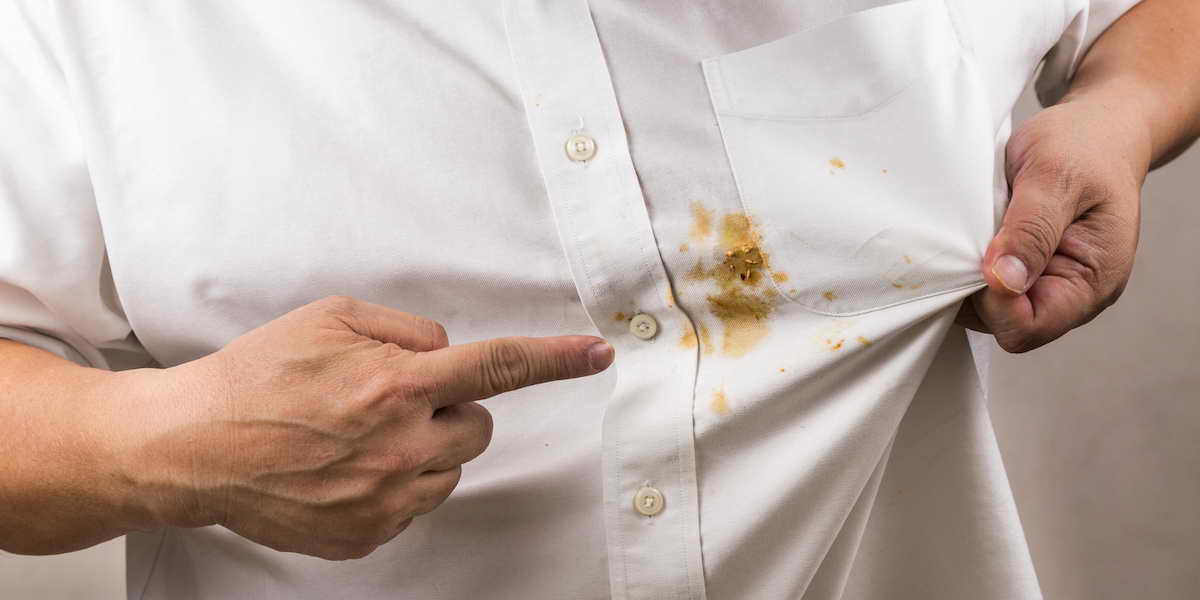Handling Stains

Suits, shirts, dresses, blouses and in general, all clothing, are always in the line of fire. Stains are a fact of life. Soup or tomato sauce stains appear on a silk tie after an otherwise spectacular meal. Minor shaving accidents leave their mark on custom shirts. Lipstick emerges on your perfectly pressed white collar. With a little advance knowledge, you can learn to identify the type of stain and administer the appropriate solution.
Stains fall into two broad categories: greasy and non-greasy. Examples of greasy stains are salad dressing or butter, and cleaning fluid will usually do the trick. Non-greasy stains, like blood or orange juice, usually respond well to water and can be resolved with a quick trip to the lavatory. Sometimes stains are hybrid in nature: both greasy and non-greasy. These combinations should be addressed with a two-stage treatment involving first a cleaning fluid and then water. Your custom clothing shop is a good place to get further advice regarding stain removal.
Garments that are dry-clean-only are a special case. Treating them with soap and water can actually make the problem worse by setting the stain. You can purchase aerosol spot removers for dry cleanable items and simply spray the affected area. Similar products are available for suede shoes, which can often regain their beauty with a simple application.
To protect your wardrobe, a really challenging stain is probably best taken to the dry cleaners. They are skilled at assessing the situation and will draw upon a vast array of cleaning products that can target specific blemishes.
Sending Out For Dry Cleaning
Virtually any garment will have cleaning instructions printed on a small label.
When building a wardrobe of custom clothing and accessories, the practical person will do well to select everyday garments that are machine washable. However, many fine garments that are essential to your wardrobe are dry-clean-only. Be aware that excessive dry cleaning may shorten the life of your valuable garments because the harsh chemicals can damage fabric fibers.
A few words about returning home with dry cleaned clothing: You should take your garments out of the plastic bags because these synthetic receptacles tend to hold cleaning odors and excessive heat inside. Take clothes off wire hangers (which do nothing to preserve the shape of shoulders or the smooth lines of trousers). Let your clothes air out at least overnight so that the dry cleaning chemicals can disperse.
